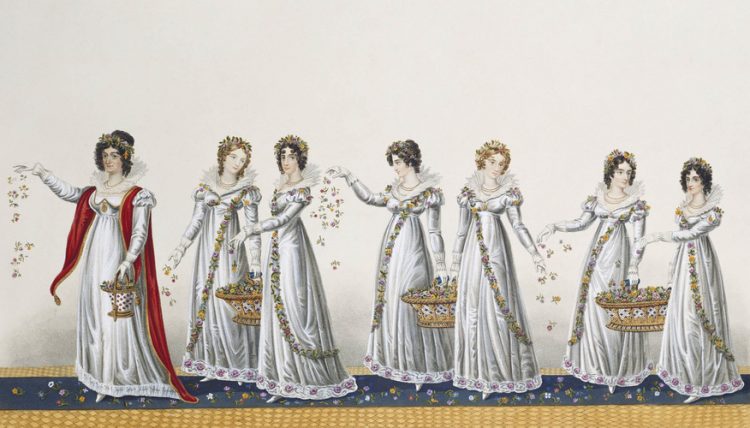Several websites report the consecration last Friday in Jerusalem of the oil, described by the liturgical term of Chrism, to be used at the Coronation of the King and Queen.
The consecration of the oil by the Patriarch of Jerusalem and the Anglican Archbishop of Jerusalem is a notably ecumenical act. It is a tribute to The King’s publically expressed support for ecumenical dialogue and for Christians in the Middle East. It links two at least of the strands of the “Branch Theory”, and, in the light of the latest set of fissures in the Anglican Communion, obviates tensions and doubts therein about validity.
The reports tend to concentrate on the contemporary concern with not using animal products as are used in the 1626 recipe. That may have been something new in part in its own time. As King James I, having been anointed at his Scottish coronation as an infant in 1567, was not anointed again at his English coronation in 1603, although King Charles I was anointedat both his English and Scottish coronations. Thus in 1626 the last anointing at Westminster had been in 1559 when Queen Elizabeth had complained the oil smelt of fish.
Not using animal products from civet, whales, and deer may well be standard in preparing Chrism for consecration at the Holy Week liturgy today. I once attended the the Archbishop of Birmingham’s Chrism Mass at the Oxford Oratory and once that of the then Bishop of Ebbsfleet at Pusey. At both there was a genuine sense of witnessing something that was ‘other’, that was indeed sacramental.
I recall hearing that a Catholic bishop spoke of how his consecration was fixed in his memory by the rich, pervading aromas of the scented oils that were infused into the Chrism.
Robert Hardman in his Mail Online account makes the excellent point that the King is reverting to an older tradition with this use of Chrism.
This act of consecration in Jerusalem is probably a first for centuries - not arguably since tha days of the Latin Kingdom of Jerusalem in the twelfth century. That is, of course, if the Kings of Jerusalem were anointed - the privilege was closely guarded by theHoly Roman Emperors and the Kings of France and England and maybe some others. The Kings of Scots did not receive the Papal privilege until 1329, and the Kings of Portugal until a century later. In Scandinavia it appears to have developed following Old Testament precedent with the Lutheran reformation in the sixteenth century.
The Royal family has acquired a spiritual connection with Jerusalem in the twentieth century through the burial there of His Majesty’s grandmother Princess Alice - and indeed to her aunt, St Elizabeth the New Martyr who is also buried there.
At his coronation in October 1399 King Henry IV was the first English monarch who was able to receive the oil reputed to have been given miraculously by the Virgin Mary to St Thomas of Canterbury during his exile at Sens in the 1160s, and which had, apparently, languished forgotten in a box in the Tower of London despite the best attempts of King Edward II and later King Richard II to be supplementarily anointed with it. This was refused by Pope John XXII in the first instance in 1317 and Archbishop Thomas Arundel in the second in 1396-7. The story is somewhat disjointed but is set out in regard to King Edward II by the
Fourteenth Century Fiend website at
Edward II & the Holy Oil of St Thomas Becket
In 1399 King Richard appears to have taken the phial containing the holy oil - presumably it normally sat in the eagle ampulla - and worn it around his neck on his ill-fated visit to Ireland that ended with his deposition.
How one quite forgets about a gift entrusted by the Virgin Mary to the great English martyr Archbishop is almost as much a mystery as the gift itself, but that is perhaps another matter for another day.
King Henry IV’s tomb tester in Canterbury Cathedral is decorated inter alia with the eagle emblem, and at other fifteenth century coronations the ampulla had an enhanced place in the procession into the Abbey.
King Henry was thus anointed with this miraculous oil of Chrism, a rival to the French Sainte Ampoule at Reims. It was possibly, maybe probably, from the very same Eagle ampulla - much restored in 1661 - that will be used on May 6th.
The Ampulla and Spoon
Image: Crown Copyright/ Country Life
We must trust that this Chrism will not have the same physical side effect it had upon the monarch in 1399, as according to one source, King Henry IV apparently suffered some type of skin reaction on his scalp from the oil. To some this may have been seen as a judgment in dethroning King Richard II. Today one might wonder if it was an allergic reaction by a redhead - I am, for example, assured that they react differently to anaesthetics from the rest of us.
We may have some idea of the constituents of the present recipe, and of that from 1626 - but those of the miraculous oil delivered to St Thomas remains a Divine Mystery.




